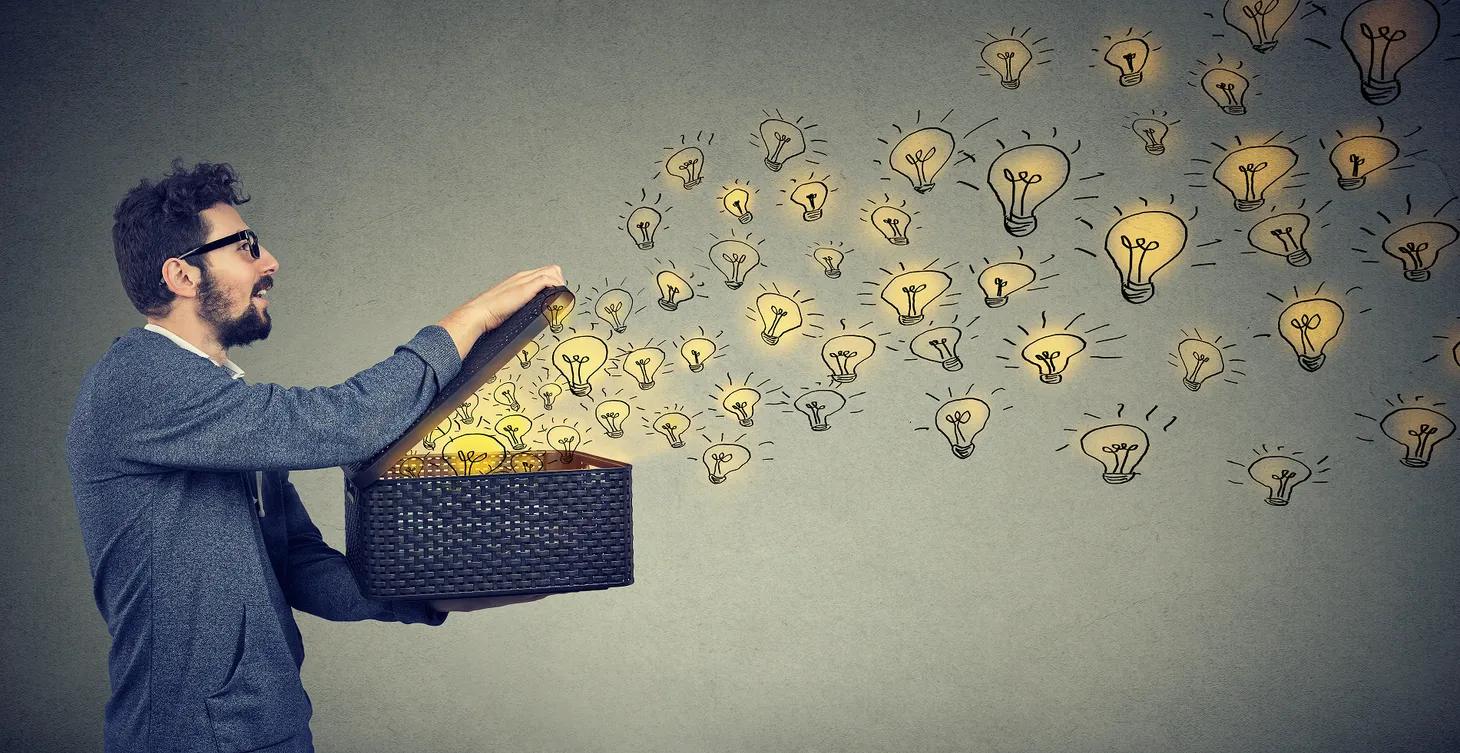Patience in Innovation: Success Stories From the Front Lines
In a world of on-demand everything and overnight shipping, we’ve all but forgotten what it means to be patient. We’re so used to having the world at our fingertips that it’s hard to imagine, or even tolerate, waiting very long for anything. And unfortunately, we don’t check this attitude at the door

In a world of on-demand everything and overnight shipping, we’ve all but forgotten what it means to be patient. We’re so used to having the world at our fingertips that it’s hard to imagine, or even tolerate, waiting very long for anything. And unfortunately, we don’t check this attitude at the door when we walk into the office; most people don’t look at innovation and think, “Let’s just give this some time.” Like our Amazon packages and Netflix shows, we want them fast. We want innovation right now.
Yet, if we look at examples throughout history, some of the most groundbreaking innovations modern society has ever seen were also some of the slowest. They took time—and a lot of it.
One business writer muses that patience becomes a forgotten virtue when companies have such spectacular success overnight. “It's certainly the one most difficult (virtue) to sustain in a business world driven by quarterly results and get-rich-quick expectations.”
Cornell University Professor, Allan Filipowicz, tells us that “embracing patience is the key to creating an innovation culture,” and that innovation thrives in environments that encourage experimentation and incremental change, rather than quick outcomes.
“Innovation is going to be very, very slow. You will do something, nothing will happen; you'll do it again, nothing will happen. And so what happens is we give up much too soon,” Filipowicz says.
But good things really do come to those who wait. Let’s look at three powerful examples of how patience can bring about amazing results in innovation. By supporting innovation over the long-term and delaying gratification on the payoffs, you too can achieve tremendous innovations in your field.
Tesla Motors: Sticking to the Plan
Let’s start with the story of Elon Musk, the visionary CEO of Tesla Motors and, now, SolarCity. Featured recently in Forbes as #1 among the top fifteen “World's Most Innovative Companies,” Tesla Motors, Inc. engages in designing, developing, manufacturing, and selling electric vehicles and electric power train components.
In July, Musk released the second installment of Tesla's master plan. Part I, which came out in 2006, outlined Tesla’s automotive strategy and was, more or less, followed by a T. Ten years of patience and focus later—that's how long Part I required—the company produced the “first American car entrant in almost a century,” one that was affordable to car owners everywhere.
The second installment moves Tesla beyond the traditional car market, with a plan to reconfigure our cities, energy systems, and our impact on the environment. Once again, Tesla has created a long-term plan to reach their desired innovations, innovations that could have far-reaching effects on society. But will investors’ patience with this “perennially unprofitable company” hold out?
One suspects the answer to that question is a resounding “yes,” since patience has long been a virtue of Tesla investors. They buy into Musk's disruptive vision and drive toward a future in which people don't own cars, but rather access them, an entirely different business model than exists today in the automotive industry. As Musk meets the challenge of completing Part I of his plan (reconfiguring the auto industry), investors will probably stay on for Part II, which aims to reconfigure cities, energy systems, and our impact on the environment.
Of himself, Elon Musk says, “Patience is a virtue, and I'm learning patience. It's a tough lesson.”
3D Systems: Working Smaller and Better
According to Avi Reichental, President, CEO, and Director of 3D Systems, 3D printing transforms the way we think and create. The craftsmanship and artisanship we lost in the mass production of the industrial revolution are enjoying a renaissance in 3D printing, with 3D makers and designers as the new craftsmen and artisans. However, the team at 3D Systems knew that the major innovations they were aiming for would not happen overnight or all at once. Instead of focusing their efforts on creating sudden, sweeping disruptive innovations, they remained patient and focused on creating steady, incremental improvements to their designs.
Reichental explains, “This vision is one that began with Chuck Hull of 3D Systems 33 years ago. His idea was to return Detroit to competitiveness as it lost market shares to the Japanese. Chuck had the idea he could work smaller and get to market faster.”
Instead of hyper-focusing on the larger goal of creating an accessible, commercially viable 3D printer, Hull and his team focused on innovating smaller and faster. And with each small innovation, 3D Systems got closer and closer to its end goal.
“This idea of Chuck’s has become a ‘disruptive exponential technology' that touches everything: shoes, cars, mobile devices, fashion, jet engines, medicine, and food, to name a few things. It is influencing how we learn, how we teach, how we express ourselves, and how we design.”
Today, 3D Systems is a publicly traded company, a giant in its field, and a leading innovator in the 3D printing space. It took 33 years, but Chuck Hull's idea, combined with the patience that creates an environment for innovation, placed the company at the forefront of not only transforming their industry but our world.
ULTIMAKER: TINKERING ACROSS TRADITIONAL BOUNDARIES
Another visionary innovator in the 3D printing environment is Erik de Bruijn, co-founder of Ultimaker BV. Where Chuck Hull's idea was to manufacture smaller and faster, de Bruijn's idea was to have fun manufacturing and do it cooperatively. His company embraced the 3D printing community's values of “tinkering, creativity, open sharing, collaboration, community, enabling and empowering.”
While Ultimaker didn't require as much patience from its investors as other examples we've seen (it became an established brand in the 3D printing community within its first year, selling its flagship product, “Ultimaker,” to nearly 1,000 people worldwide), it requires patience from its enthusiastic founder.
De Bruijn’s approach to his job is to encourage freedom and creativity while maintaining stability and quality control. He gives his team the time and space to tinker and improve their product and collaborate with designers both inside and outside of the company, without the pressure of meeting deadlines or showing returns. He believes disruptive innovations happen with time, and that they can’t be forced or rushed.
De Bruijn's commitment to tinkering across traditional boundaries is evident in his newest project, a website “where makers collaborate to get you the best open source 3D designs ready to download and print,” Youmagine.
As we can see from these innovation leaders, Innovation takes time. Sometimes—heck, most of the time—more than is expected. But in order to create innovations that really pay off, organizations must take the long view and resist the temptation and pressure to make rash, short-term decisions.
So, whether you’re racing toward a future of clean energy and driverless cars; working to bring 3D print manufacturing to every home; or transforming the way we think, design, or collaborate across traditional boundaries; the path from here to there is paved with patience, built into every business model.
For more information about success in business innovation, please contact me.
Phil McKinney Newsletter
Join the newsletter to receive the latest updates in your inbox.




